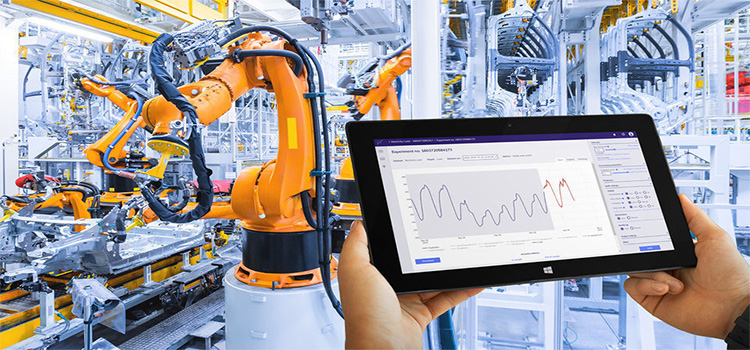The Future of Care: Exploring Emerging Technologies in Robot Maintenance
Introduction
In a rapidly advancing technological landscape, the role of robots in everyday life is undergoing swift evolution. These machines play a crucial part in various sectors, from automated assistants to industrial robots. However, with the rise of robotics, effective maintenance becomes paramount. This article delves into the future of care, exploring emerging technologies in robot maintenance that are set to revolutionize the way optimal functioning of mechanical counterparts is ensured.
Future Trends in Robot Maintenance
Predictive Maintenance with Artificial Intelligence (AI): A groundbreaking advancement in robot maintenance has emerged with the integration of AI for predictive maintenance. This innovative approach utilizes the power of advanced algorithms to empower robots with the ability to foresee potential component failures. This proactive approach minimizes downtime and optimizes maintenance schedules, ensuring that resources are allocated most effectively.
Moreover, by extending the operational lifespan of robots, predictive maintenance reduces the need for frequent replacements, leading to both cost savings and improved environmental sustainability. This transformative step enhances productivity and efficiency in industrial settings, providing businesses a competitive edge through data-driven insights in today's automated manufacturing landscape.
Several companies, including FANUC Corporation, are pioneering advancements in predictive maintenance by introducing cutting-edge Industrial Internet of Things (IIOT) software. Using AI technology, FANUC's AI Servo Monitor predicts potential failures to prevent production disruptions. In collaboration with MT-LINKi through machine learning, the software analyzes daily machine performance, presenting data through intuitive graphs for easy anomaly detection.
Sensor Technology for Real-Time Monitoring: The integration of cutting-edge sensor technology is pivotal in revolutionizing how industries can monitor the performance of robots in real time. These sophisticated sensors continuously track and analyze various aspects of a robot's operation. From subtle shifts in temperature to nuanced changes in vibration and other critical variables, these sensors provide a comprehensive dataset that serves as a foundation for proactive and preventive measures.
This data-driven approach ensures that robots operate efficiently and allows for timely intervention to prevent potential issues. By relying on this information, industries can optimize the overall performance and longevity of their robotic systems along with improving the precision and reliability of robots in various applications.
Internet of Things (IoT) in Robot Maintenance: The integration of the Internet of Things (IoT) into robot maintenance has resulted in a significant impact on operational efficiency. With interconnected devices enabling real-time communication, robots can relay their status and maintenance needs directly to a centralized system. This streamlined exchange of information allows for remote diagnostics, empowering technicians to identify and address issues without physical presence.
The consequential reduction in downtime and swift troubleshooting enhances the overall responsiveness and resilience of robotic systems. The synergy between robots and IoT introduces a data-driven precision that optimizes maintenance schedules and resource allocation, resulting in substantial long-term cost savings.
Machine Learning for Adaptive Maintenance Strategies: The integration of machine learning algorithms empowers robots to learn from their operating conditions, fostering adaptability that gives rise to personalized maintenance strategies. This allows for customized maintenance plans that optimize performance and extend robot lifespan.
This personalized maintenance strategy ensures that robots are consistently kept in optimal condition, optimizing their performance and operational longevity. Moreover, with the continuous advancements in robotics technology, it is anticipated that robots will become capable of anticipating possible failures before they happen and developing the ability to self-repair, further enhancing their resilience and adaptability.
Blockchain for Enhanced Security and Transparency: As security becomes increasingly important in robot maintenance, blockchain technology emerges as a promising solution to safeguard sensitive data. Integrating blockchain creates an immutable and tamper-proof maintenance history record, ensuring data integrity and preventing unauthorized alterations.
Additionally, blockchain's decentralized nature fosters transparency, exceeding industry standards and establishing an accountable environment. This dual impact safeguards critical data and establishes a trustworthy and accountable environment. It positions blockchain as a pivotal technology in ensuring the robust security and transparency of robot maintenance records, aligning with current industry expectations and future regulatory requirements.
Augmented Reality (AR) for Maintenance Guidance: The integration of augmented reality (AR) into robot maintenance streamlines the troubleshooting process and presents a paradigm shift in how technicians interact with robotic systems. AR-powered glasses provide technicians with an enhanced view of the physical robot, overlaying digital information and visual guides directly onto the machine.
This innovative approach significantly diminishes the necessity for extensive training, as technicians can seamlessly follow intuitive visual cues. Thus, the integration of AR not only simplifies troubleshooting but also enhances the user-friendly approach to maintaining robots and improving efficiency in the process.
Many companies are actively involved in advancing AR technology for predictive maintenance, and one example is TeamViewer (UpSkill), a remote access and remote-control computer software company. The company is actively working on the development of augmented reality (AR) for predictive maintenance.
Through wearable AR devices, they connect and guide technicians in real time through tasks, checklists, and work orders. This streamlined approach boosts efficiency by delivering instructions directly to technicians' vision, minimizing reliance on paper, and enabling dynamic guidance. The integration of AR facilitates quick updates and media sharing between technicians and managers, fostering informed decision-making. This commitment to AR highlights its potential to revolutionize workforce connectivity and operational excellence.
Conclusion
The future of robot predictive maintenance is bright, with several emerging technologies poised to revolutionize how robots are maintained. These technologies include machine learning, digital twins, edge computing, and IoT sensors. These technologies are still in their early stages of development but have the potential to improve the efficiency and effectiveness of robot maintenance significantly. In addition to these emerging technologies, several other trends are shaping the future of robot predictive maintenance. The growing adoption of robotics in various industries, the growing complexity of robots, and the rising cost of downtime create a strong demand for predictive maintenance solutions.
About the Author
 Arjun Chetry is an accomplished researcher and writer with a history of more than three years of conducting thorough research. With a professional background as a market analyst, he has a keen eye for analyzing industry trends and understanding consumer behavior. His dedication to exploring diverse subjects and conducting in-depth analyses has equipped him with a deep understanding of research intricacies. He remains committed to staying up-to-date with the latest market trends and recognizing their impact on both business and society. His well-rounded interests and experiences contribute to his ability to offer insights and perspectives on a wide range of topics. The author can be reached at arjun.chetry@nextmsc.com
Arjun Chetry is an accomplished researcher and writer with a history of more than three years of conducting thorough research. With a professional background as a market analyst, he has a keen eye for analyzing industry trends and understanding consumer behavior. His dedication to exploring diverse subjects and conducting in-depth analyses has equipped him with a deep understanding of research intricacies. He remains committed to staying up-to-date with the latest market trends and recognizing their impact on both business and society. His well-rounded interests and experiences contribute to his ability to offer insights and perspectives on a wide range of topics. The author can be reached at arjun.chetry@nextmsc.com


Leave a Reply